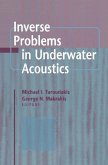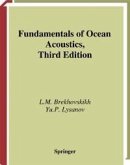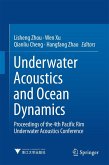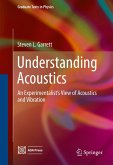Since the mid-1970s, the computer has played an increasingly pivotal role in the field of ocean acoustics. Faster and less expensive than actual ocean experiments, and capable of accommodating the full complexity of the acoustic problem, numerical models are now standard research tools in ocean laboratories.
The progress made in computational ocean acoustics over the last thirty years is summed up in this authoritative and innovatively illustrated new text. Written by some of the field's pioneers, all Fellows of the Acoustical Society of America, Computational Ocean Acoustics presents the latest numerical techniques for solving the wave equation in heterogeneous fluid-solid media. The authors discuss various computational schemes in detail, emphasizing the importance of theoretical foundations that lead directly to numerical implementations for real ocean environments. To further clarify the presentation, the fundamental propagation features of the techniques are illustrated in color.
Computational Ocean Acoustics conveys the state-of-the-art of numerical modeling techniques for graduate and undergraduate students of acoustics, geology and geophysics, applied mathematics, and ocean engineering. It is also an essential addition to the libraries of ocean research institutions that use propagation models.
The progress made in computational ocean acoustics over the last thirty years is summed up in this authoritative and innovatively illustrated new text. Written by some of the field's pioneers, all Fellows of the Acoustical Society of America, Computational Ocean Acoustics presents the latest numerical techniques for solving the wave equation in heterogeneous fluid-solid media. The authors discuss various computational schemes in detail, emphasizing the importance of theoretical foundations that lead directly to numerical implementations for real ocean environments. To further clarify the presentation, the fundamental propagation features of the techniques are illustrated in color.
Computational Ocean Acoustics conveys the state-of-the-art of numerical modeling techniques for graduate and undergraduate students of acoustics, geology and geophysics, applied mathematics, and ocean engineering. It is also an essential addition to the libraries of ocean research institutions that use propagation models.
Dieser Download kann aus rechtlichen Gründen nur mit Rechnungsadresse in A, B, BG, CY, CZ, D, DK, EW, E, FIN, F, GR, HR, H, IRL, I, LT, L, LR, M, NL, PL, P, R, S, SLO, SK ausgeliefert werden.
From the reviews of the second edition: "Book concisely sums up the progress made in computational ocean acoustics over the last thirty years, emphasizing the latest modern numerical techniques for solving the wave equation in heterogeneous fluid-solid media. The authors discuss in detail various computational schemes, highlighting the importance of theoretical foundations that lead directly to numerical implementations for real ocean environments. The book provides various numerical methods and theoretical foundations for solving wave equations in 2D and even 3D varying environments that the reader may find useful as a reference tool." (Qian Zuwen, Zentralblatt MATH, Vol. 1234, 2012)









